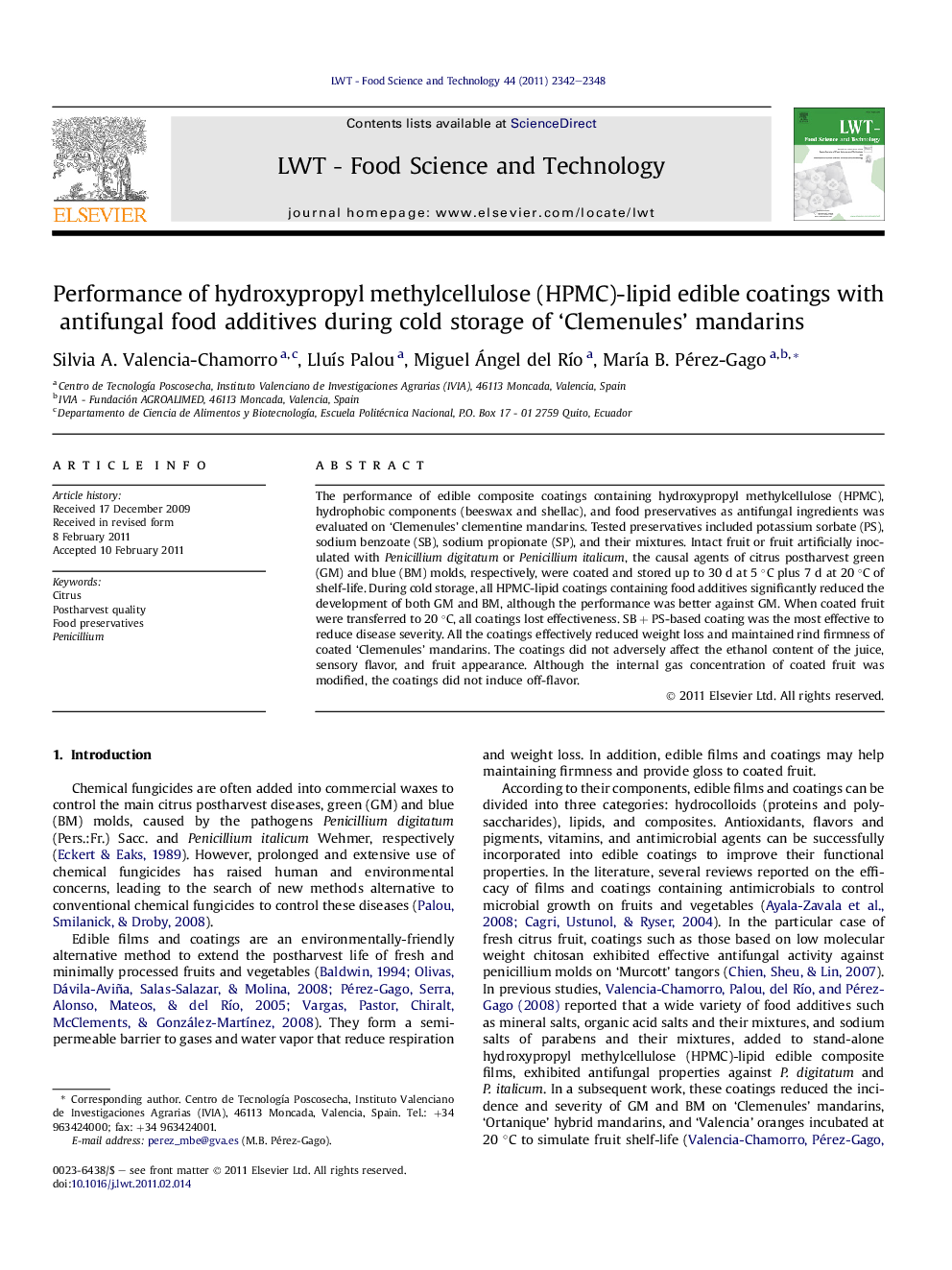| Article ID | Journal | Published Year | Pages | File Type |
|---|---|---|---|---|
| 6405938 | LWT - Food Science and Technology | 2011 | 7 Pages |
The performance of edible composite coatings containing hydroxypropyl methylcellulose (HPMC), hydrophobic components (beeswax and shellac), and food preservatives as antifungal ingredients was evaluated on 'Clemenules' clementine mandarins. Tested preservatives included potassium sorbate (PS), sodium benzoate (SB), sodium propionate (SP), and their mixtures. Intact fruit or fruit artificially inoculated with Penicillium digitatum or Penicillium italicum, the causal agents of citrus postharvest green (GM) and blue (BM) molds, respectively, were coated and stored up to 30 d at 5 °C plus 7 d at 20 °C of shelf-life. During cold storage, all HPMC-lipid coatings containing food additives significantly reduced the development of both GM and BM, although the performance was better against GM. When coated fruit were transferred to 20 °C, all coatings lost effectiveness. SB + PS-based coating was the most effective to reduce disease severity. All the coatings effectively reduced weight loss and maintained rind firmness of coated 'Clemenules' mandarins. The coatings did not adversely affect the ethanol content of the juice, sensory flavor, and fruit appearance. Although the internal gas concentration of coated fruit was modified, the coatings did not induce off-flavor.
